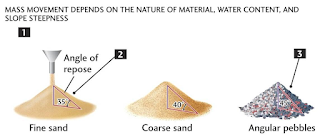Oral delivery of proteins and peptides
Introduction:
Proteins and peptides are important therapeutic agents due to their high specificity and potency. However, their oral delivery is challenging due to their large size, hydrophilicity, and susceptibility to degradation by enzymes in the gastrointestinal tract. In this article, we will discuss the challenges associated with oral delivery of proteins and peptides, and the different approaches used to improve their delivery.
Proteins and peptides have several physicochemical properties that make them unsuitable for oral drug delivery. These include:
Large molecular size: Proteins and peptides have a large molecular size, which makes them difficult to absorb across the gastrointestinal tract.
Hydrophilicity: Proteins and peptides are highly hydrophilic, which makes them difficult to dissolve in the lipophilic environment of the gastrointestinal tract.
Susceptibility to enzymatic degradation: Proteins and peptides are susceptible to degradation by enzymes in the gastrointestinal tract, which can reduce their bioavailability.
Different approaches to improve protein and peptide delivery:
Chemical modification: Chemical modification of proteins and peptides can improve their stability, reduce their susceptibility to enzymatic degradation, and enhance their permeability across the gastrointestinal tract. For example, PEGylation, acylation, and glycosylation have been used to improve the pharmacokinetics of proteins and peptides.
Nanoparticle-based delivery: Nanoparticle-based delivery systems, such as liposomes, polymeric nanoparticles, and dendrimers, can protect proteins and peptides from enzymatic degradation, improve their bioavailability, and enhance their permeability across the gastrointestinal tract. These systems can also target specific tissues and cells, which can improve drug efficacy and reduce toxicity.
Prodrug approach: The prodrug approach involves modifying the drug to improve its stability, solubility, and permeability across the gastrointestinal tract. For example, enzymatically cleavable prodrugs can be designed to release the active drug after oral administration.
Mucoadhesive systems: Mucoadhesive systems, such as bioadhesive polymers and nanoparticles, can improve the retention of proteins and peptides in the gastrointestinal tract, and enhance their permeability across the intestinal epithelium.
Cell-penetrating peptides: Cell-penetrating peptides (CPPs) are short peptides that can penetrate the cell membrane and deliver proteins and peptides to intracellular targets. CPPs can also enhance the uptake of proteins and peptides across the intestinal epithelium, which can improve their bioavailability.
Conclusion:
Oral delivery of proteins and peptides is challenging due to their physicochemical properties, such as large molecular size, hydrophilicity, and susceptibility to enzymatic degradation. Different approaches have been developed to improve their delivery, including chemical modification, nanoparticle-based delivery, prodrug approach, mucoadhesive systems, and cell-penetrating peptides. These approaches offer promising strategies for improving the oral delivery of proteins and peptides, which can enhance their clinical utility and improve patient outcomes.




Comments
Post a Comment